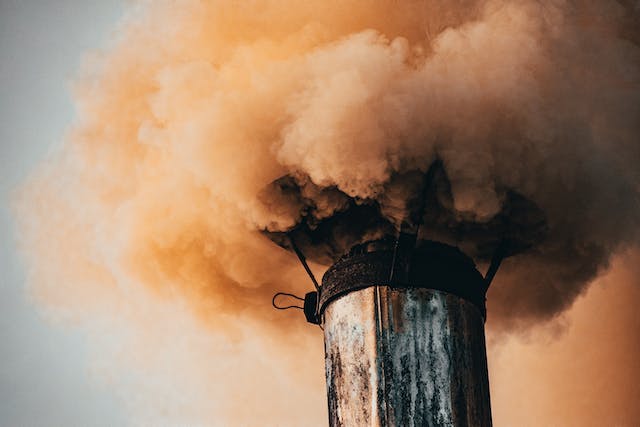In our modern industrialized world, pollution has become an increasingly pressing issue, threatening the delicate balance of our planet’s ecosystems and endangering human health. Among the various forms of pollution, two particularly notorious culprits are Chlorofluorocarbons (CFCs) and smog. By shedding light on these complex phenomena, we aim to underscore the urgency of collective action to address the challenges posed by these pollutants.
Understanding Chlorofluorocarbons (CFCs):
Chlorofluorocarbons, commonly called CFCs, are synthetic compounds composed of carbon, chlorine, and fluorine atoms. Initially hailed for their versatility and non-toxic properties, CFCs found widespread use in various industrial and household applications, including refrigeration, air conditioning, and aerosol propellants.
The Impact of CFCs on the Ozone Layer:
One of CFCs’ most significant environmental consequences is their role in ozone depletion. When released into the atmosphere, CFC molecules eventually reach the stratosphere, undergoing photodissociation due to exposure to ultraviolet (UV) radiation. The ozone layer serves as Earth’s natural shield, absorbing a significant portion of the sun’s harmful UV radiation. Depletion of this protective layer poses grave risks to human health, increasing the incidence of skin cancer, cataracts, and other adverse health effects.
Regulatory Measures and Successes in CFC Reduction:
Recognizing the severity of the ozone depletion crisis, the international community took swift action to address the issue. The landmark Montreal Protocol, enacted in 1987, is a testament to global cooperation in environmental conservation.
Understanding Smog:
Unlike CFCs, which primarily affect the ozone layer, smog pertains to a different aspect of atmospheric pollution. Smog is a noxious mixture of pollutants, primarily composed of ground-level ozone, particulate matter, nitrogen oxides (NOx), volatile organic compounds (VOCs), and other reactive gases.
The Impact of Smog on Human Health and the Environment:
The health effects of smog exposure are well-documented and wide-ranging. Inhalation of smog pollutants can exacerbate respiratory conditions such as asthma, bronchitis, and cardiovascular diseases. Long-term exposure to smog has been linked to reduced lung function, increased susceptibility to respiratory infections, and even premature death. Furthermore, smog poses significant environmental challenges, including damage to vegetation, impairment of ecosystems, and adverse effects on air and water quality. Acid rain, a byproduct of smog formation, can have devastating consequences for aquatic ecosystems, soil fertility, and infrastructure.
Mitigation Strategies and Future Outlook:
Addressing the smog issue requires a multifaceted approach encompassing regulatory measures, technological innovations, and public awareness campaigns. Governments worldwide have implemented stringent air quality standards and emissions regulations to curb smog-forming pollutants. Advancements in pollution monitoring and control technologies offer promising avenues for combating smog more effectively.
FAQ:
What are CFCs, and how do they contribute to pollution?
Explore the characteristics of chlorofluorocarbons (CFCs) and their role in depleting the ozone layer, leading to environmental and health concerns.
What is smog, and how does it form?
Understand the composition and formation of smog, a type of air pollution characterized by a mixture of pollutants, including ground-level ozone, particulate matter, and volatile organic compounds.
Which category of pollution encompasses both CFCs and smog?
Learn about the specific category of pollution that includes both CFCs and smog, highlighting their interconnectedness and shared impacts on the environment and human health.
What are the primary sources of CFC emissions, and how do they affect the ozone layer?
Explore the sources of CFC emissions, such as industrial processes, refrigerants, and aerosol propellants, and understand their role in ozone depletion and environmental damage.
Conclusion
The menace of atmospheric pollution, exemplified by Chlorofluorocarbons (CFCs) and smog, underscores the urgent need for concerted global action. While the successful phase-out of CFCs demonstrates the efficacy of international cooperation and regulatory interventions, the persistent challenge of smog necessitates ongoing efforts to address its multifaceted causes and consequences.





